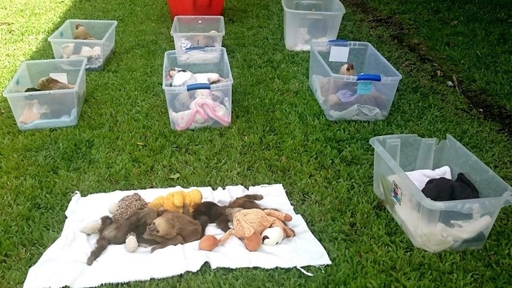
An unfortunate truth has been revealed about an internationally recognized sanctuary and popular tourist destination in Costa Rica.
The Sloth Sanctuary of Costa Rica is marketed as a rescue facility for lost, sick, or injured sloths. However, two veterinarians, both former employees of the facility, say that the welfare and conservation mission is a blatant lie.
Photographs from the facility show multiple sloths crammed into tiny cages, malnourished and displaying abnormal behaviors.
 Normally high in the tree canopy, these sloths are sleeping in a very unnatural position. Image: Camila Dunner and Gabriel Pastor
Normally high in the tree canopy, these sloths are sleeping in a very unnatural position. Image: Camila Dunner and Gabriel Pastor
Despite the fact that the facility’s alleged mission is to rescue, rehabilitate, and release the animals, the owner has released only an average of 2 animals per year since its founding in 1992.
Dr. Camila Dunner, a Veterinarian that recently left her job at the facility due to the poor conditions stated, “Instead of ever trying to release an animal, she just started keeping them — letting people pet them, keeping them in tiny enclosures.”
There are now far too many animals at the facility, more than the staff can handle. Of the 191 sloths at the sanctuary, the veterinarian said that all but 25 could be successfully released and reintegrated into the wild. She lamented that the owner has a “constant desire to possess these animals,” which is why so many remain at the center.
 Normally solitary and arboreal, these young sloths are kept together in bins on the ground. Image: Camila Dunner and Gabriel Pastor
Normally solitary and arboreal, these young sloths are kept together in bins on the ground. Image: Camila Dunner and Gabriel Pastor
What’s more, the sloths at the facility are not given appropriate diets, and they suffer from various ailments because of it. Many of the animals have jaw deformities, digestive system damage, and dental disease.
 A sloth with a urinary obstruction is huddled for comfort. Image: Camila Dunner and Gabriel Pastor
A sloth with a urinary obstruction is huddled for comfort. Image: Camila Dunner and Gabriel Pastor
We are hopeful that the Costa Rican environmental agency Ministerio de Ambiente y Energia (MINAE) will look further into this, and make all necessary changes. This is a reminder to all of us to educate ourselves and report facilities that we feel do not appear to properly care for animals.




